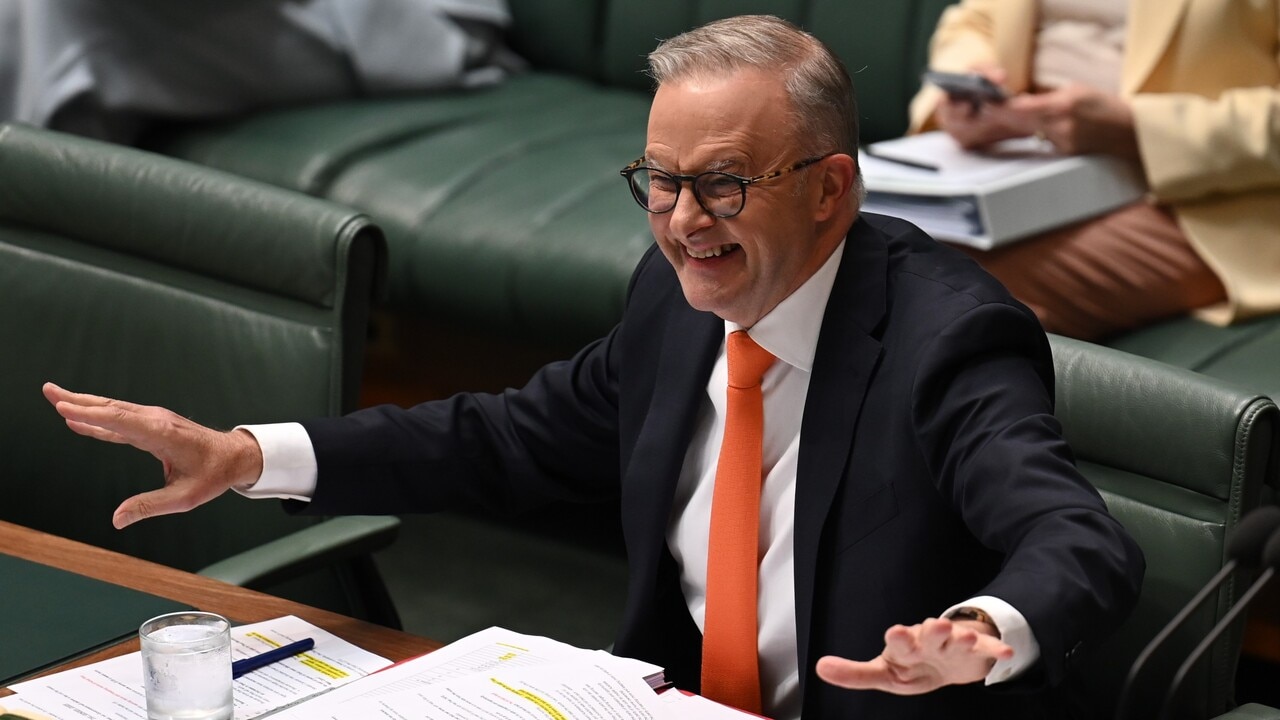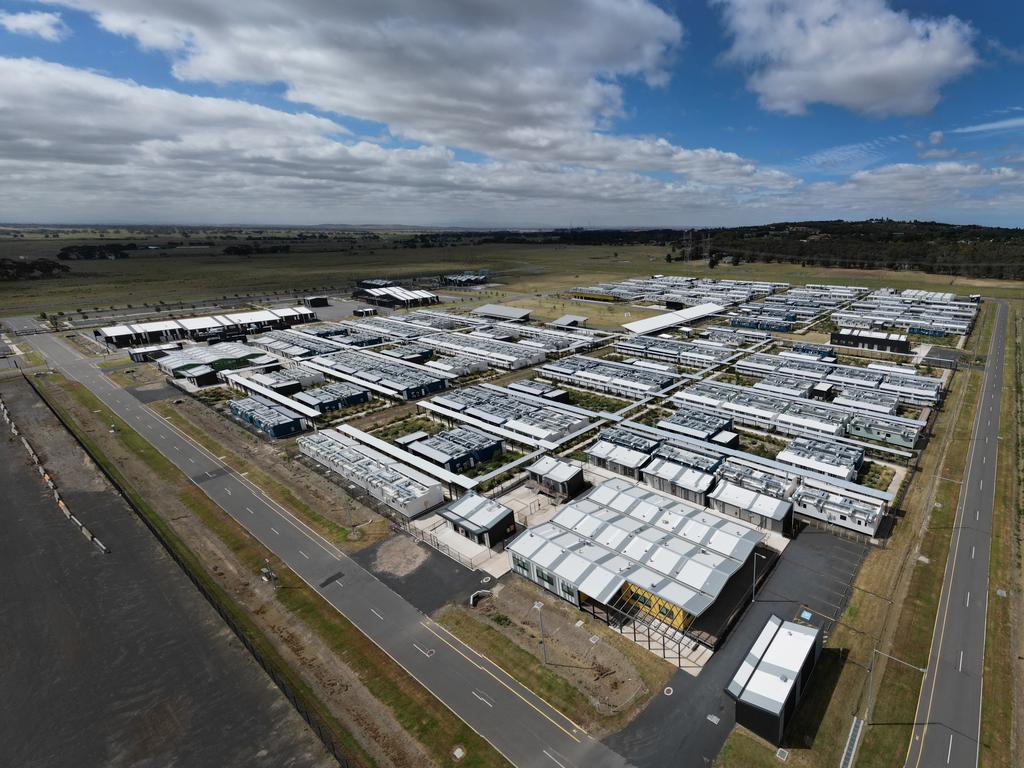‘Productivity sick as a dog’: plummeting living standards in worse fall since 1959
Living standards in Australia during the inflation crisis have fallen more dramatically than in other OECD countries, with real disposable income down more than in the last four major recessions.

Households are suffering the worst decline in living standards since the 1950s with the fall in real disposable income eclipsing those of the last four major recessions including the 1970s inflation crisis and the Covid-19 pandemic.
Analysis of official government statistics shows the current cost-of-living crisis has hit households twice as hard as the 1990-91 and 1982-83 recessions and significantly more sharply than any period dating back to 1959.
It also reveals living standards in Australia during the current inflation crisis have fallen more than in any other OECD country, with the hit to households now worse than almost all comparable developed nations.
The statistics paint a grim picture for the Albanese government, which was elected on the promise of lowering the cost of living, as it prepares to recontest an election with household pain to continue and the prospect of interest rate cuts being put back until the second half of next year.
Coalition analysis of Australian Bureau of Statistics data since 1959 shows there has never been a fall in living standards as dramatic as that of the past two years. This analysis has been confirmed by independent economists.
Since the March quarter in 2022, two months before the election of the Albanese government, living standards have fallen 8.7 per cent.

Economist Chris Richardson said the decline in living standards was without precedent since the index was first measured and warned of the political consequences.
“What you’re seeing with approval ratings and election outcomes with leaders around the world is that those holding the baby at the moment when inflation rips through living standards have paid the price,” Mr Richardson said.
“The challenge for Australia is that the impact on our living standards has been far greater than anywhere else. There is no argument that the fall (since 2022) is bigger than anything we have seen since 1959.”
Opposition Treasury spokesman Angus Taylor accused the Labor government of presiding over the greatest fall in living standards in the developed world. “This is completely unprecedented,” he said.
“Since data began being collected on the household account budget, we have not seen a hit to Australians’ standard of living that is even close to resembling what we have seen under Labor. This is the weakest and most incompetent government since Whitlam.”
After the 1974-75 recession – under the Whitlam government and triggered by the global oil shock – living standards in 1976 were comparable to before the recession, with only a slight fall in the index during that period. This was attributed to significant wage rises under the Labor government and lower levels of household debt.
Living standards during the 1982-83 recession, preceded by entrenched inflation, were quickly returned to levels in 1981 prior to the downturn. At the lowest point in the recession living standards only fell 3.5 per cent.
The worst fall in living standards apart from the current period was during the 1990s recession when Labor sought to put a brake on speculative asset pricing while tackling inflation.
At the lowest point, real disposable income fell 5 per cent. However, by the end of 1991, living standards had returned to where they were at the end of 1989, before the recession.
By comparison, living standards in Australia increased during Covid due to government intervention and subsidies, rising 7 per cent during the lockdown phase and remaining elevated until the 2022 election.
The index first began to fall in September 2021, under the former Coalition government.

When measured against this historical point, the decline is closer to 10 per cent. The Coalition argues that the bulk of the fall in living standards occurred under the Albanese government.
Mr Richardson said there had been nothing historically since the 1950s like the fall in living standards over the past two years, largely because wages had not been able to keep pace with prices.
While there have been a number of technical recessions since 1959, including the credit squeeze of 1961, the accepted significant recessionary periods are identified as the four since 1974.
Mr Richardson said another difference now compared with other periods was that households had taken on more debt than previous generations.
While the Coalition sought to compare the current household recession with the Whitlam recession of 1974-75 based on living standards, Mr Richardson said a more relevant comparison was the productivity problem.
“The main parallel is a society coasting on its laurels for too long and not challenging itself with reform,” he said. “You have productivity that’s as sick as a dog.”
The similarity is the weakness of productivity compared with earlier phases, including the 70s.
“And the productivity growth slowdown was because politicians didn’t do the heavy lifting,” Richardson said. “In the 70s they didn’t do enough on tariffs, they were far too inward-looking, our businesses were way too protected our public service had no imagination and wasn’t being listened to.
“Today, our productivity is worse. It is a similar slowdown story but it has slowed down from a weaker starting point.”
Mr Richardson said it was an indictment on not just the current Labor government but the previous Coalition government.
“The living standards story shows we have had a lost decade, we have spun our wheels as a nation, and you could almost time it to the Hockey budget of 2014 when all our politicians retreated and decided not to be courageous,” he said.
The methodology used to calculate the living standards index since 1959 was based on ABS data measuring gross disposable income divided by household final consumption and population data derived from GDP and GDP per capita.
Mr Richardson said the methodology was sound but cautioned that the June quarter of 2024 was based on assumptions of as-yet-unknown population data but this would not significantly alter the final number.
The Treasurer’s office did not dispute the numbers,
“We know that Peter Dutton is a risk to the economy and to household budgets because we know his record – falling real wages, much higher inflation, huge deficits and much more debt,” Dr Chalmers said.
“Even with the quite remarkable progress that’s been made in the national data, that doesn’t always immediately translate into how people are feeling and faring in the economy, we recognise that and we’re doing something about it. When we came to office people were going backwards and real wages had fallen substantially for five consecutive quarters and because of all of that, we know that people have a lot of ground to make up in their household budgets.”







To join the conversation, please log in. Don't have an account? Register
Join the conversation, you are commenting as Logout